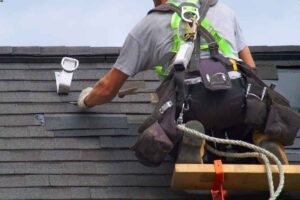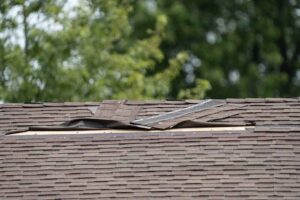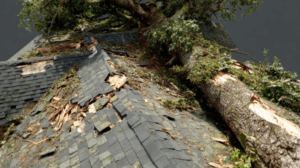When storms roll through the Sandhills, most homeowners watch the trees bend and the rain drive sideways and think—please let the roof hold. You might scan for missing shingles or check the gutters after it’s all over. But what most people never think about is the quiet, unassuming strip of metal or sealant that does some of the hardest work up there: the flashing.
Roof flashing isn’t flashy—it doesn’t draw attention like a new set of shingles—but when it fails, it can cause thousands of dollars in hidden damage. It’s the unsung hero that keeps your chimney, vents, and skylights watertight. And during North Carolina’s windy storm season, flashing is often the first line of defense that takes the hit.
Let’s walk through what flashing actually does, how wind and weather wear it down, what warning signs homeowners often miss, and why catching it early can save your home from leaks and rot.
Why Flashing Fails When the Wind Picks Up
Flashing exists anywhere two surfaces meet on your roof—around chimneys, skylights, vents, or valleys where shingles overlap. It’s meant to guide water away from seams and vulnerable joints. When wind storms strike, these areas are under enormous pressure.
Gusts lift shingles, break adhesive seals, and tug at flashing edges. Even a small gap allows water to drive underneath. Once moisture finds its way in, it doesn’t stop—gravity pulls it downward into decking, insulation, and drywall.
The Sandhills’ unique climate makes this worse. The combination of humid air, sudden temperature drops, and heavy storms can warp flashing, loosen fasteners, and dry out the sealant that keeps everything tight. A small weakness can turn into a major leak within a season.
And because flashing damage isn’t as obvious as a missing shingle, many homeowners overlook it until the water stains start appearing indoors.
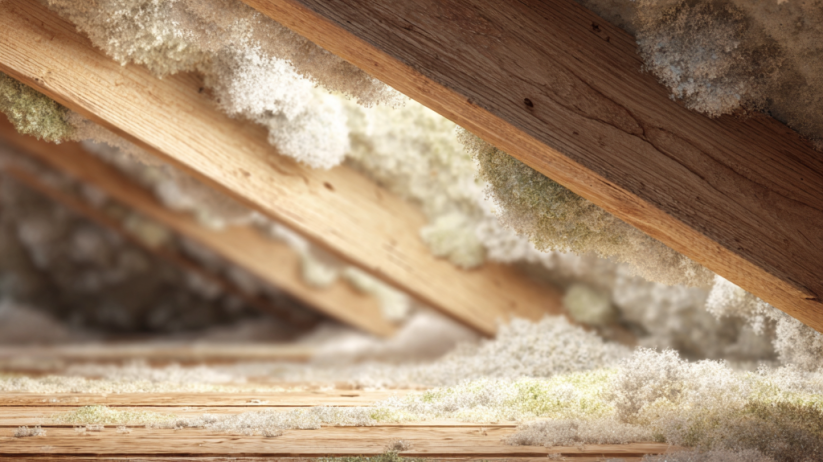
What Happens When Flashing Fails
When flashing breaks down, the results aren’t immediate—but they’re relentless. Water will always find the lowest point of entry. Over time, it works its way beneath your roof system, creating a domino effect of damage:
- Leaks and interior stains – Water sneaks behind walls or ceilings, showing up as dark rings, drips, or peeling paint.
- Rotting wood decking – Once the roof’s foundation absorbs moisture, it weakens from the inside out.
- Mold and mildew – Humidity trapped in the attic or insulation creates a breeding ground for spores.
- Compromised insulation – Wet insulation loses effectiveness, driving up energy costs.
- Structural damage – Chronic water intrusion can affect rafters, trusses, and even ceiling joists.
All of that can start from a three-inch strip of cracked sealant or loose flashing nail. That’s how quietly flashing failures can wreak havoc.
Common Types of Roof Flashing (and How They Break Down)
Knowing where flashing lives on your roof helps you keep an eye on it. Here are the most common types—and what can go wrong when the wind kicks up:
- Step Flashing: Found where the roof meets a wall or dormer. Each piece “steps” with the shingles. Strong winds can lift these layers and let water in along the side of your house.
- Chimney Flashing: Includes base, counter, and step pieces that seal around the chimney stack. High winds can loosen the counter flashing or crack the mortar, letting rainwater drip directly inside.
- Valley Flashing: Sits in the roof valleys where two slopes meet. Heavy rain and debris accumulation can erode sealant and cause rust.
- Vent Pipe Flashing: Surrounds plumbing or exhaust vents. This rubber or metal collar often cracks over time or pulls away during storms.
- Skylight Flashing: Frames the edges of skylights. Wind pressure can push against the glass frame, breaking the waterproof seal.
Each of these plays a small part, but together they keep your home dry. Ignore one, and you invite water to test your luck.
The Signs Sandhills Homeowners Often Miss
Here’s where many homeowners in the Sandhills get caught off guard. Flashing problems rarely announce themselves until the damage spreads. But there are a few subtle clues that can save you a headache later:
- Dark streaks or damp spots around chimneys or vents, especially after storms.
- Peeling or bubbling paint on interior walls near the ceiling line.
- Water stains in the attic, often near framing joints or skylight openings.
- Corrosion or rust visible on flashing surfaces when inspected from the ground or ladder.
- Loose shingles near roof features like chimneys or dormers—a sign that flashing has lifted underneath.
If you’re noticing any of these, it’s worth having a professional check things out before the next round of wind and rain.
How to Prevent Flashing Failures Before They Start
A little attention goes a long way. Proper flashing care isn’t complicated—it just requires consistency and professional eyes once in a while.
- Schedule regular inspections. At least twice a year (spring and fall), have your roof inspected. Professional roofers can spot early signs of wear long before leaks develop.
- Keep your gutters clean. Clogged gutters force water to back up under flashing along the eaves and valleys.
- Seal small gaps early. Minor cracks or lifted sections can be resealed before they worsen.
- Trim back overhanging branches. Branches rubbing against flashing during high winds can cause scratches, dents, or loosening.
- After any major storm, check for debris. Fallen limbs, hail, or heavy gusts can shift flashing out of place even if it looks fine from the ground.
By pairing these habits with professional maintenance, you can extend your roof’s lifespan and avoid unnecessary repairs.
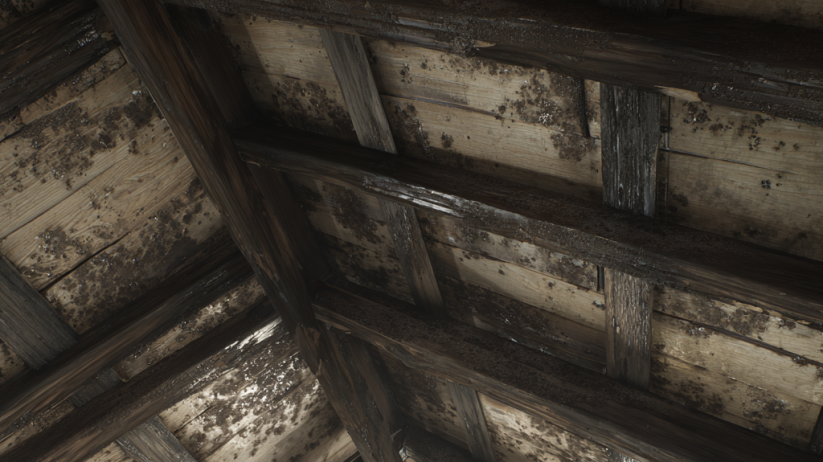
Why Flashing Issues Are So Easily Overlooked
Flashing failures tend to hide behind bigger, more visible problems. When a storm hits, everyone’s first instinct is to look for missing shingles or torn gutters. Flashing sits quietly under those layers—doing its job without much glory.
But while shingles protect broad areas, flashing protects the seams—the vulnerable intersections that handle the most water flow. It’s like the gasket on an engine: if it fails, it doesn’t matter how well the rest of the parts are built.
Homeowners often assume that a few drips or stains are “normal” after a storm. They patch the ceiling and move on, not realizing the same small leak might return after the next wind event. By the time the problem becomes obvious, the repair costs have multiplied.
That’s why an inspection after high winds isn’t a luxury—it’s smart home maintenance.
How a Roofing Professional Solves the Problem
When you call in a professional like Red Wolf Roofing, the first step is a detailed inspection. The team looks at more than just shingles—they check the roof’s entire water-shedding system, including flashing.
A qualified roofer will:
- Examine all flashing around chimneys, vents, valleys, and skylights for loosened edges, rust, or missing sealant.
- Remove debris and test for soft spots or hidden leaks under suspect areas.
- Reseal or replace flashing as needed, ensuring a watertight fit.
- Provide a photo report so you can see exactly what was found and repaired.
- Recommend long-term maintenance to prevent recurrence, especially before hurricane or winter storm season.
This isn’t just about fixing what’s broken—it’s about reinforcing the parts of your roof most likely to fail under stress.
The Cost of Ignoring Flashing Failures
If left unchecked, flashing damage can evolve from a minor nuisance into a major home repair nightmare. Water that seeps under flashing doesn’t just damage the roof—it compromises your home’s entire envelope.
Ignoring it can lead to:
- Mold growth behind drywall
- Structural wood rot
- Sagging ceilings
- Electrical hazards from hidden leaks
- Reduced home resale value
And because flashing issues often fall into “maintenance” territory, insurance may not cover the repairs if the problem was left unattended. That makes proactive inspections not only wise—but financially smart.
Small Fixes, Big Protection
In the Sandhills, storm season is a fact of life. But wind damage doesn’t have to spell disaster. By paying attention to your roof’s flashing—the seams and joints that keep everything watertight—you can prevent the kind of hidden leaks that turn into major repairs.
The next time a storm blows through, take a look around your home. If you see damp spots, lifted shingles, or just want peace of mind, it’s time for a professional inspection.
Contact Red Wolf Roofing in North Carolina for expert roof repair and inspection services. Their experienced team understands the unique challenges Sandhills homeowners face and can help ensure your roof—and its flashing—stay storm-ready year-round.
Because when the wind picks up, it’s not the loudest problem that costs you—it’s the quiet one you don’t see coming.

